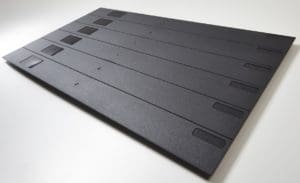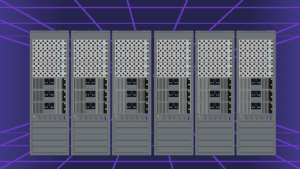Implementing a cutting-edge data centre environment is crucial for maximising efficiency and performance. At EziBlank, we understand the challenges that come with managing complex infrastructures, which is why our innovative air-flow management and energy-monitoring systems are designed to optimise your operations and reduce power consumption. By incorporating our high-quality blanking panels, you can enhance your data centre’s effectiveness while protecting your valuable knowledge assets. Explore our solutions today and take the first step towards a more efficient and sustainable future for your data centre.
Elevate Data Center Performance with Blanking Panels
Enhancing the performance of data centres often hinges on small yet impactful innovations, such as the strategic use of blanking panels. These panels are designed to cover unused spaces in server racks, preventing hot air from recirculating and ensuring that cooling systems work at peak efficiency. By improving airflow management, blanking panels help maintain optimal operating conditions for servers, reducing the risk of overheating and boosting overall system performance. For data centres striving to maximise efficiency and reliability, blanking panels offer a straightforward and effective solution.
Read More
What are blanking panels and how do they work?
Blanking panels are a critical yet often underappreciated component in the design of efficient data centres. These panels are used to cover empty spaces within server racks, preventing the unwanted mixing of hot and cold air. By directing the airflow more effectively, blanking panels ensure that cooling systems operate more efficiently, reducing the energy required to maintain optimal temperatures. This not only enhances the performance and longevity of the equipment but also contributes to significant energy savings, making blanking panels a simple but powerful tool in data centre management.
Read More
The Power of Eziblank Blanking Panels for Data Center Retrofits
When it comes to retrofitting data centres, EziBlank® blanking panels offer a straightforward yet highly effective solution to enhance cooling efficiency and reduce energy consumption. These panels are specifically designed to seal unused rack spaces, preventing hot air from recirculating into the cold aisle and ensuring that cooling efforts are focused where they are needed most. By optimising airflow management, EziBlank® panels not only improve the overall performance of the data centre but also extend the life of critical equipment. For data centres looking to upgrade without extensive overhauls, EziBlank® blanking panels provide a cost-effective and impactful option.
Read More
Best Practices for Data Center Scalability
Scalability is a cornerstone of modern data centre management, ensuring that facilities can grow and adapt to meet increasing demands without compromising performance. Best practices for achieving scalability include modular design, which allows for the incremental addition of capacity, and the implementation of efficient cooling solutions that can be scaled alongside the infrastructure. The use of blanking panels to manage airflow and reduce energy consumption is another key strategy, as it supports both current and future expansion needs. By focusing on these scalable solutions, data centres can remain agile and responsive to the ever-evolving technological landscape.
Read More
Design Aesthetics in Data Centres
While functionality and efficiency are paramount in data centre design, aesthetics also play a significant role in creating a cohesive and professional environment. Modern data centres are increasingly incorporating design elements that reflect the brand's identity and enhance the visual appeal of the facility. This includes the strategic use of colours, materials, and layouts that not only make the space more visually pleasing but also support operational efficiency. For instance, the integration of aesthetically designed blanking panels can contribute to a cleaner, more organised appearance while improving airflow management. Balancing form and function in data centre design helps create an environment that is both efficient and visually engaging.
Read More
How Many Data Centres in Australia
Australia is home to a rapidly growing number of data centres, driven by the increasing demand for digital services and cloud computing. As of recent years, there are over 200 data centres spread across the country, with the majority located in major cities like Sydney, Melbourne, and Brisbane. These facilities range from small enterprise data centres to large-scale hyperscale centres operated by global tech giants. The growth of data centres in Australia reflects the country's strategic importance in the Asia-Pacific region as a hub for digital infrastructure, supporting everything from local businesses to international cloud services.
Read More
Choosing the Right Blanking Panels for Your Data Centre
Selecting the appropriate blanking panels for your data centre is a crucial step in optimising airflow and improving overall energy efficiency. Blanking panels, which fill unused spaces in server racks, are available in various sizes and materials to suit different configurations and needs. Choosing the right panels involves considering factors such as rack dimensions, the type of cooling system in place, and the specific airflow requirements of your equipment. Properly installed blanking panels help prevent hot air recirculation, ensuring that cooling systems operate more effectively, thereby reducing energy consumption and enhancing the performance and longevity of your data centre’s infrastructure.
Read More
What Is A Server Rack Used For?
A server rack is a critical component in the organisation and management of IT infrastructure within data centres. These racks are designed to house servers, networking equipment, and other hardware in a structured and efficient manner, allowing for optimal use of space and easy access for maintenance and upgrades. By keeping servers and equipment neatly arranged, server racks facilitate effective cooling and airflow, which is essential for preventing overheating and ensuring reliable operation. Additionally, server racks help in cable management and provide a level of physical security, making them indispensable for maintaining an organised and efficient data centre environment.
Read More
How Are Server Racks Measured?
Server racks are measured primarily in terms of their height, which is expressed in units known as "rack units" or "U." Each rack unit corresponds to 1.75 inches (44.45 mm) of vertical space, and standard server racks typically range from 42U to 48U in height, though smaller and larger sizes are available. The width and depth of server racks are also important, with most racks being 19 inches wide to accommodate standard equipment sizes, while depth can vary to support different types of hardware. Understanding these measurements is crucial for ensuring that all servers, networking devices, and other components fit properly within the rack, allowing for efficient use of space and optimal cooling.
Read More
